With significant climate change impacts already affecting us, we need to go one step further than to simply suggest methods of mitigation and focus more on radical adaptation as well as change the way we look at development in our cities.
Acknowledging local conditions and ensuring adherence across agencies and citizens will ensure achievements of its goals.
With over 140 km of coastline and 480 sq.km land area, Mumbai is one of the most vulnerable cities to climate change induced hazards such as sea-level rise, storm surge, and urban flooding amongst many others. Further, with only 12% of its land area under green cover and with a population of over 13 million, Mumbai has one of the poorest per capita accessible open spaces at 1.08 sq.m/person, which is much lower than the Urban and Regional Development Plan Formulation and Implementation Guidelines of 10-12 sq.m. for Indian cities. Although Mumbai city’s GDP is slated to touch close to $230bn by the year 2030 – which is larger than that of several countries, this development has come at a large natural and environmental cost – the meagre access to green space for its ever-growing population has been further diminished over the last 4 decades in which time Mumbai has lost over 43% of its green cover, and the situation does not seem to be getting better any time soon.
See the completed Mumbai Climate Action Plan.
Personally, I was exposed to the first-hand effects of sea-level rise and storm surges in my time in New York City in 2012 when Superstorm Sandy wreaked havoc on the northeastern coastline of the US. The physical, as well as monetary damages, were too large to comprehend, but the response by the federal and state governments to the event was incredible to witness. Rebuild By Design was a competition that was launched by President Obama in order to have some of the best planners, designers, sociologists, architects, landscape architects, scientists, and many others work on creating long term, sustainable interventions to help prevent a similar loss of life and property in the future. Working as an urban designer within one of the winning teams — SCAPE Landscape Architecture — and on the Rebuild By Design competition opened my eyes to the issues surrounding climate change and its effects in a way I had never before comprehended. The winning proposals like Living Breakwaters by SCAPE off Staten Island, the Big U by BIG Architects in Manhattan, and the Hunt’s Point Lifeline proposal by Penn Design are stellar examples of acknowledging climate change and adapting our urban fabric to be more resilient by addressing the root causes of the issues and by way of systemic changes.
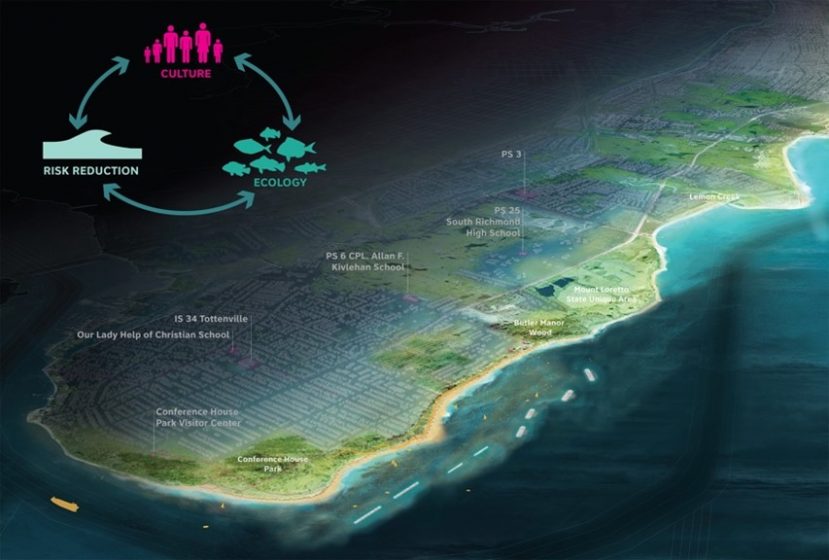
Upon moving back to Mumbai in 2015, I was rather alarmed to see the lack of discussion, or, in fact, any mention of Climate Change hazards let alone planning for their effects. This despite Mumbai having experienced its worst-ever floods in the year 2005 when vast areas of the city were flooded with up to 8 feet of water amidst torrential rain and high tides that paralysed the city for days. The aftermath of the floods saw some peripheral measures being taken such as the installation of check gates in order to prevent backflow of seawater into our natural storm water channels (nullahs) in case of high tide, but no comprehensive changes were set in motion. Mindless construction has followed in the years since the floods, including further destruction of our natural areas such as salt pan lands, wetlands, and mudflats with the government, in fact, proposing these sites as the best areas for generations of large-scale affordable housing. This has ensured that, year after year, the city continues to suffer from any heavy rain event.
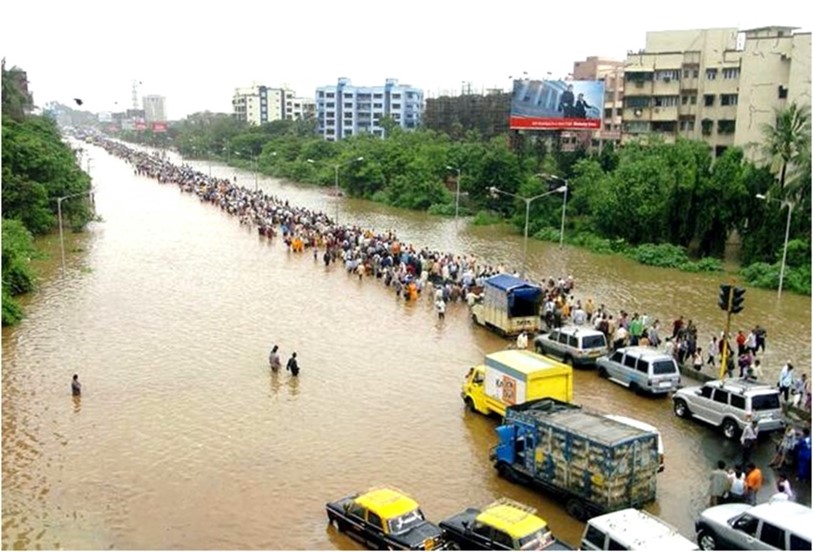
Specifically, over the last 8 years, Mumbai city has seen a huge push in city-level transport infrastructure – primarily by way of construction of new Metro rail lines as a means to aid the heavily burdened railway system in the city, as well as an elaborate Coastal road for movement of private vehicles (no planned mass transit systems will use this carriageway). While the Metro is a much-needed initiative in the city, its planning and design have been greatly criticised for lacking a short-term implementation as well as a long-term growth vision. While the southern part of the city has received an underground metro system, the northern part has been planned with elevated metro corridors. The primary reason cited for this differentiation – high costs associated with underground construction. Underground metro construction although more expensive is largely seamless and causes very little disruption to daily life in the city and ensures effortless extension of the lines in the future. (The London Underground— which is the oldest Metro system in the world built in the 1850s continues to grow even today). The overhead metro rail, on the other hand, has forced the hacking and destruction of a countless number of large 50-60-year-old rain trees along our major road arteries in order to make space for the construction and erection of the metro line. The overhead metro also has severe limitations in terms of future expansion and extension since it is weaving through an incredibly dense fabric of the city.
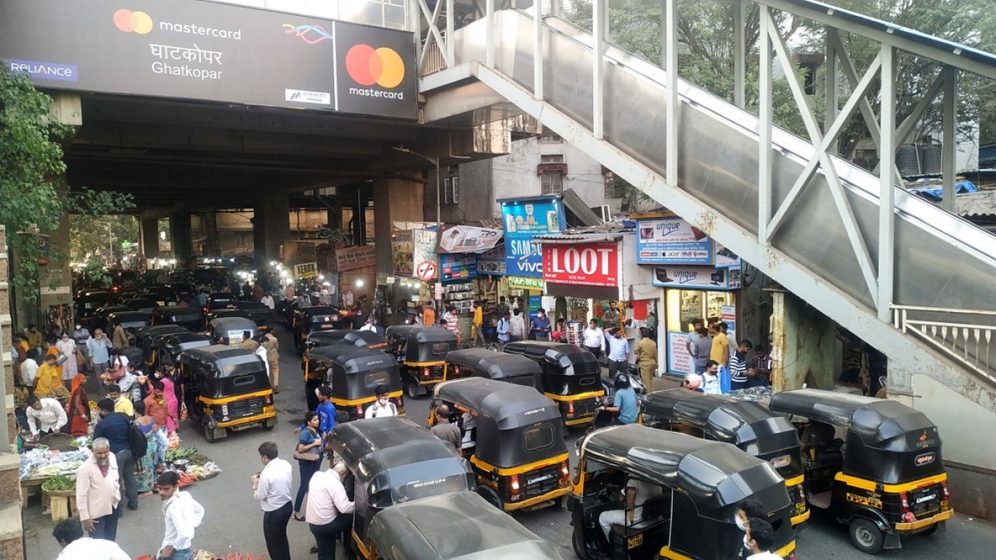
On the other hand, the famed Coastal road —albeit a jewel in the government’s cap — has been proven to be an unnecessary development based on traffic counts and user stats according to transport planners, not to mention the incredible cost of the project ($1.6bn) which could rather have been used for other public infrastructure projects. The coastal road has had a severe impact on the immensely diverse geography of the western coastline. The natural rock beds and their inter-tidal spaces along the coast are home to countless species of marine life. A lot of these areas are also filled with mangroves — which are part of the city’s natural defense mechanism against rising sea levels and coastal flooding due to storm events. The coast is also home to the city’s oldest inhabitants — fisherfolk, referred to as Kolis. Easy and unhindered access to the coastal waters, as well as land areas along the coast for various fishing-related activities, form the basis of the fisherfolk’s livelihood. The incessant landfilling (almost 300 acres) along the coast for the coastal road greatly threatens indigenous activities as well as severely alters the natural anatomy of the coastline. Despite its several cons and clear negative effect on the environment, statutory approvals and all environmental clearances were easily achieved from the Central government — a lot to do with the fact that the ruling party at the centre was also in power in our state.
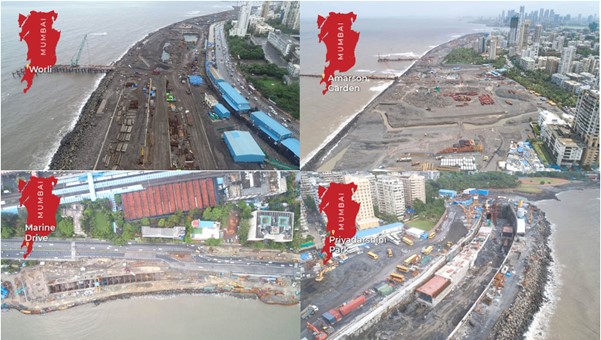
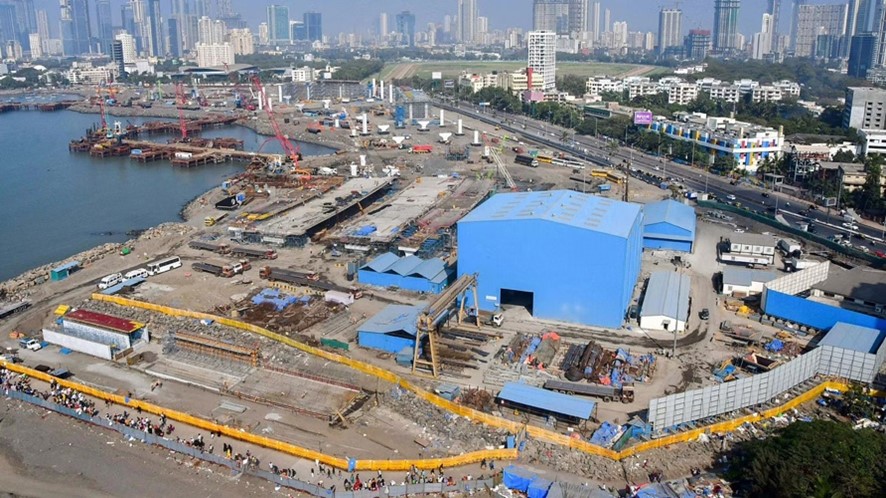
These major infrastructure projects coupled with the continuing boom of real estate in the ever-expanding city has meant that we have been in a permanent state of construction which has led to increasing levels of dust and pollution. Despite being a coastal city where the sea breeze aids in carrying most of the polluted air away, Mumbai’s pollution levels have been consistently rising and are similar to the terrible AQI levels seen in northern areas such as New Delhi. What is clearly demonstrated by these projects is a complete disregard towards the state of the environment and its preservation. An immediate shift in our mode of development from purely an engineering and mechanical approach to solving localised problems to a far superior environmental engineering and larger environmental infrastructure approach is the need of the hour if we are to approach and tackle climate change in a holistic manner at a systems level.
Tackling Climate Change is one of the 17 Sustainable Development Goals laid out by the UN- which calls for urgent action to combat climate change and its impacts. The Paris agreement adopted by countries at COP21 in Paris furthers this goal and aims to limit global temperature rise to less than 2 degrees by the end of the century. The agreement requires all countries to take action while recognizing their differing situations and circumstances. Under the Agreement, countries are responsible for taking action on both mitigation and adaptation. As of June 2020, 189 countries have joined the Paris Agreement, India included. In fact, the Government of India had already launched the National Action Plan on Climate Change (NAPCC) in June 2008 and outlined 8 national missions in order to achieve the goals set out in the plan. The National Mission on Sustainable Habitat aims to reduce energy consumption in urban areas used for transport-related infrastructure and urban buildings and promotes an urgent shift to public transport in cities. Taking a cue from the C40 Cities Network, cities are now in the process of developing their own Climate Action Plans to contribute to this vision. (C40 is a network of mayors of nearly 100 world-leading cities that are collaborating to deliver the urgent action needed in order to tackle the climate crisis.) A climate action plan is a detailed and strategic framework for measuring, planning, and reducing greenhouse gas (GHG) emissions and related climatic impacts. Ideally, a climate action plan also includes an implementation strategy that identifies required resources and funding mechanisms. (Source: City of Burlington website)
The Municipal Corporation of Greater Mumbai (MCGM) is developing the City’s first climate action plan with technical support from the World Resources Institute India (WRI). As part of the C40 Cities Network, Mumbai city is encouraged to draft its Climate Action Plan by the end of 2021 and will be doing so in collaboration with and compliance to C40 guidelines and ambitious standards. The Mumbai Climate Action Plan (MCAP): Towards a Climate Resilient Mumbai, primarily focuses on identifying climate change mitigation and adaptation strategies for the city. The 3rd Development Plan of the City – DP 2034 was released last year and aims to guide the city’s development over the next decade. In the city’s history, no previous Development Plan has achieved what it set out to do with local agencies simply not being able to keep up with the promised timelines. With each development plan, earlier initiatives are shelved to make way for new ones leading to a highly unsustainable approach to city planning. The MCAP comes at an important juncture in terms of being able to successfully weave into and carefully facilitate its agenda hand in hand with the goals set out in DP2034. If the MCAP can be successfully integrated into the 12-year plan, it can protect the city’s natural systems, increase resilience capacities of vulnerable groups, and enable resilient urban growth that ensures aggressive reductions to the city’s greenhouse gas emissions. The MCAP is slated to focus on 6 thematic action tracts to specific sectors for mitigation and adaptation. These themes are (1) Sustainable Waste Management, (2) Urban Greening and Biodiversity, (3) Urban Flooding & Water Resource Management, (4) Building Energy Efficiency, and (6) Sustainable mobility.
Mumbai’s unique and diverse ecosystems already offer protection to its citizens from extreme weather-related events such as high tides and floods. The rich diversity of natural assets that are found interspersed across the city’s ever-expanding fabric cover almost 33% of the total landmass and include over 140 km of coastline – which are one of the most bio-diverse zones of the city; 16 km of beaches; 40 km of rivers; over 70 sq. km of creeks, mangroves, and wetlands; 50 km of ‘nullahs’ – open storm water channels; and almost 58 sq. km of hills and forests. In order to have the MCAP truly transform Mumbai into a world-class sustainable and climate-resilient city, the very notion of what open spaces are need to be re-defined to go beyond gardens and parks and include these vast and diverse natural assets. Add the over 320 documented and listed gardens and parks and over 1200 recreation and playgrounds to these natural assets and the MCAP can bring almost 45% of the city’s land area directly under its purview of green and open spaces with policies specifically drafted for their protection.
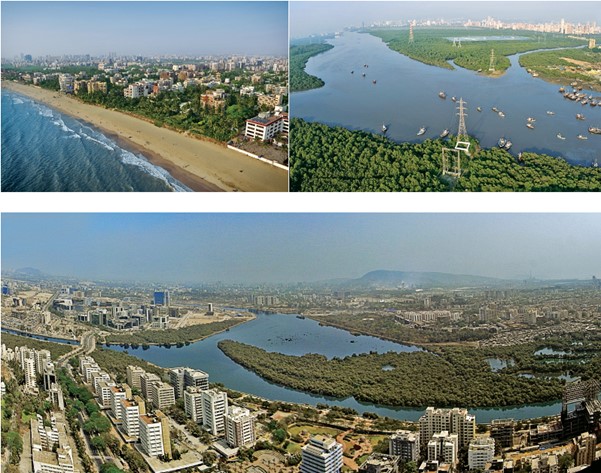
The MCAP plans to identify pathways for emission reduction strategies for the years 2030 and 2050. Integrating these natural assets into the MCAP will help achieve the following – (1) Enable universal and free access to all types of open spaces in the city – thereby allowing preservation and further expansion of these spaces once they are appropriated by citizens, (2) flood mitigation – by way of protection of mangroves and promoting natural urban drainage systems like our nullahs, permeable pavements, bio-swales and parks to help with maximum water retention and reduce surface runoff during rain events, (3) Reduce urban heat islands and promote carbon sequestration, (4) Develop a local bio-diversity and action plan that can be advocated and implemented by local area residents in their communities thereby contributing to change at a city level and (5) address issues of comprehensive housing and infrastructure solutions for marginalised people living in the buffer areas of these natural assets who otherwise misuse these areas for lack of any options available to them. Over and above this, the MCAP needs to influence the development agenda for infrastructure projects as well and ensure that projects such as the Coastal road and overhead metro go through a much tighter design evaluation process in order to conform to the regulations set in place. In summation, we believe that the following three principles must be adopted under the MCAP in order to achieve the results it is expected to see — (1) Urban Planning & Design are a Right of the common people of the city — and must be an integral part of any design process, not just in the stakeholder consultation stage before the report is published, but should be embedded into the several processes required for implementation as well, (2) Demonstrate change through participatory endeavours at a local, neighbourhood scale which will ensure that local residents can relate to the work being done, and finally (3) Scale-up these local initiatives in order to influence city-wide transformative change.
To ensure a participatory and inclusive process in the development of the MCAP, a series of stakeholder consultation sessions were arranged in the city in September last year where participants included local and state-level government agencies, think tanks, community-based organisations, private enterprises, planners, designers, and citizens of Mumbai participated across various roundtables spanning various topics of waste management, urban mobility, air quality, energy efficiency, urban greening and bio-diversity, and urban flooding and water resource management.
However, as described through the two infrastructure projects of the overhead Metro and the Coastal road, the on-ground realities shed light on the current state of affairs in the financial capital of our country, and, therefore, the distance we need to cover in order to align with some of the initiatives that are being discussed and planned in the MCAP. Close to 50 C40 world cities have successfully developed their own CAPs that are compatible with the Paris agreement ranging from Los Angeles to Kuala Lumpur – clearly, there are several examples to learn from, but it is important to adopt certain unique strategies in order to make a plan truly suitable to the local context. India currently ranks pretty high up in the Climate Change Performance Index of 2022 – in 7th spot with Denmark and Norway leading the charts – but the manifestation of these charts is yet to be seen for any of us here in Mumbai. The MCAP is certainly a much-needed positive step in the quest for tackling Climate change and we truly hope the plan lives up to its hype and facilitates a practical implementation scheme in order to meet its goals.
With significant climate change impacts already affecting us, we need to go one step further than to simply suggest methods of mitigation and focus more on radical adaptation and change the way we look at development in our cities. Initiatives like the MCAP promise a brighter way forward in order to have any chance at a liveable future on our planet.
Samarth Das
Mumbai


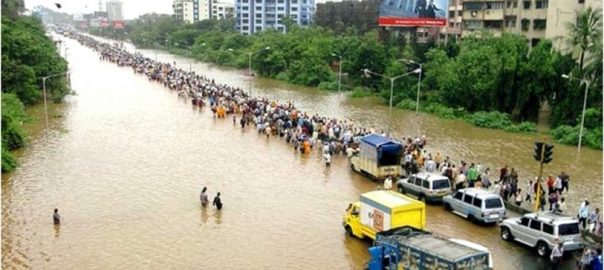
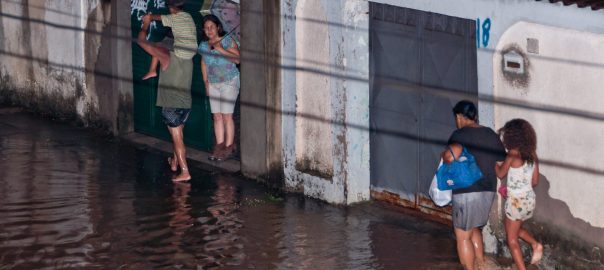
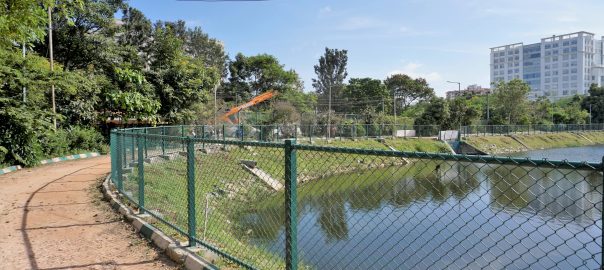


Leave a Reply